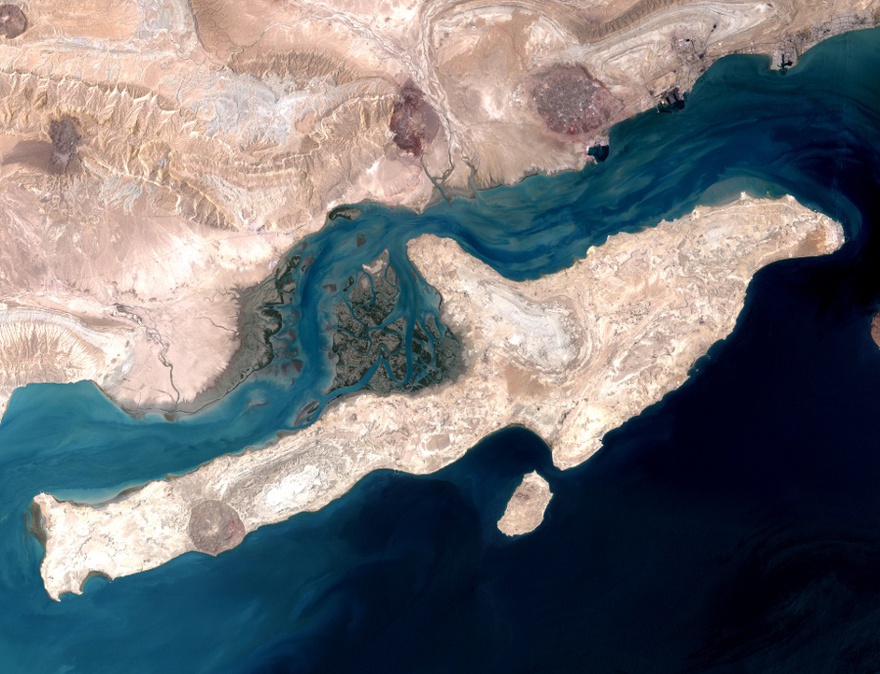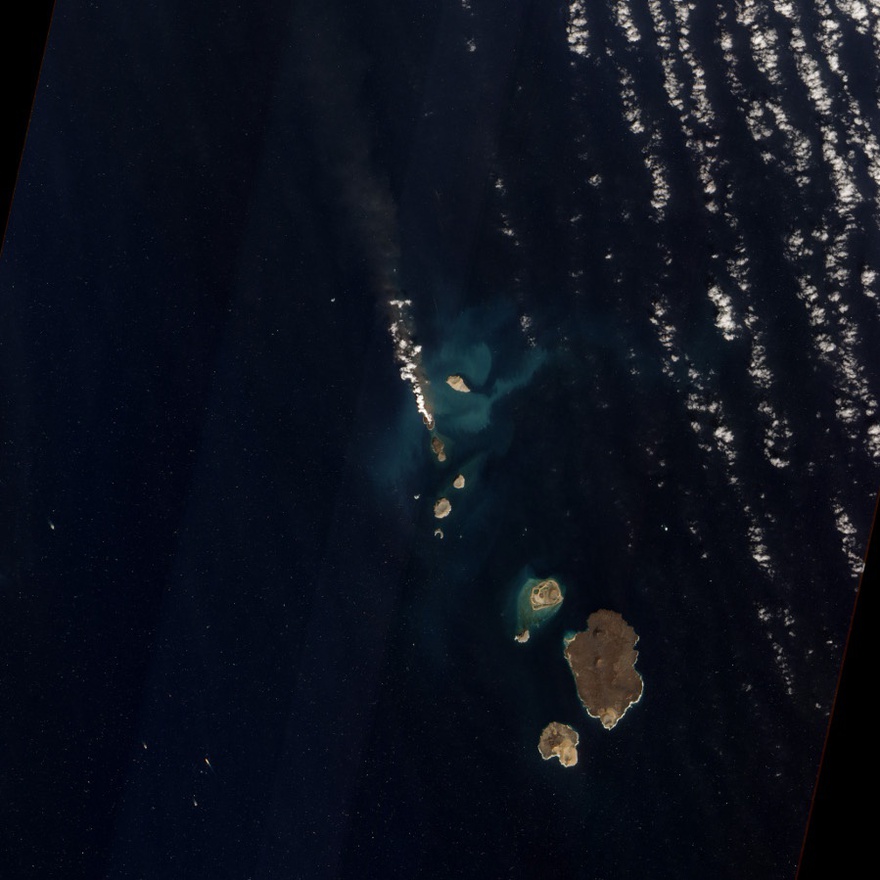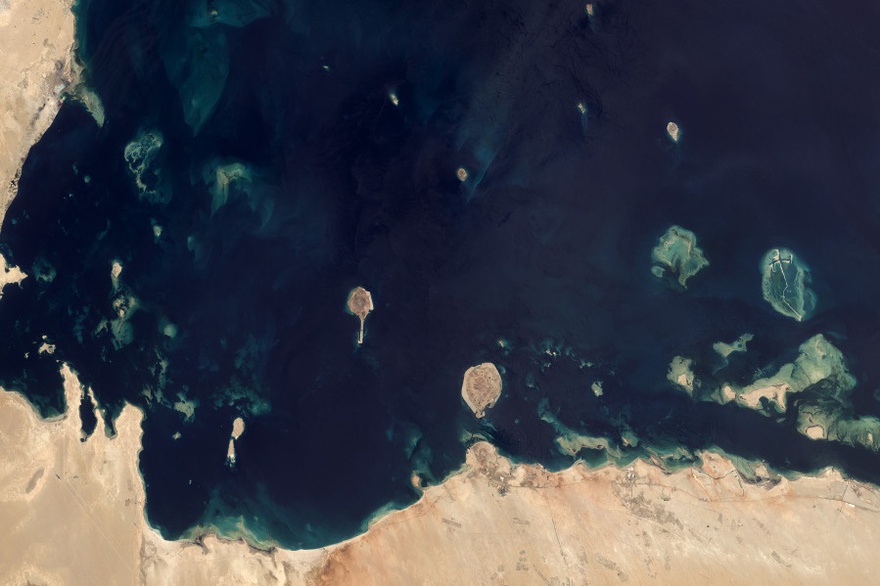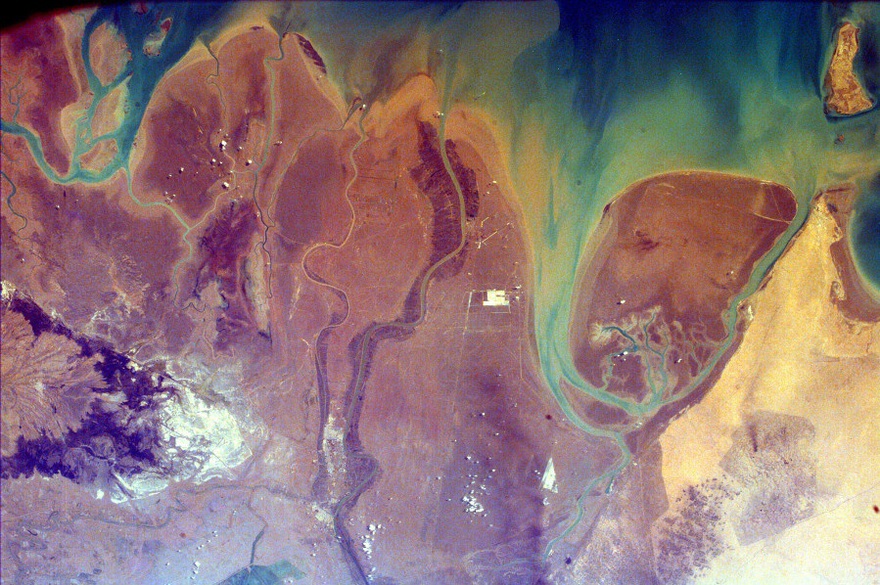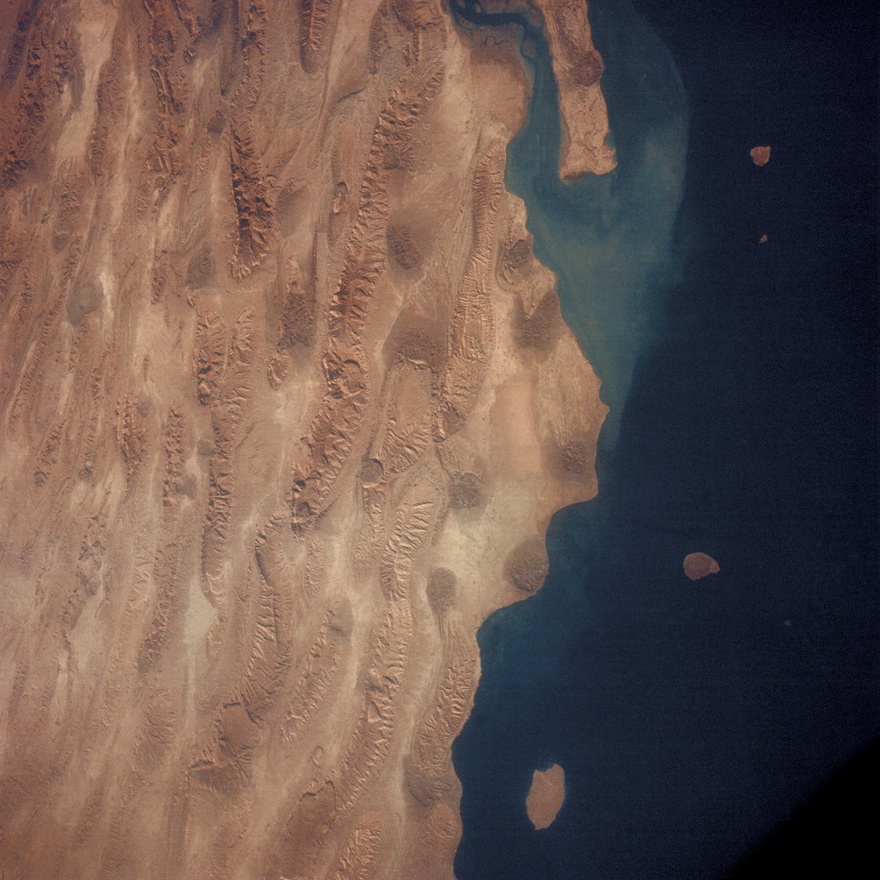Essays
Treading Gulf Waters
Xanith is Arabic slang for males with effeminate characteristics. It derives from the Classical Arabic word mukhanath – mukhannathun in plural – for transgender, intersex, or eunuch. The earliest records of the mukhanath are found in Islamic hadiths where they are referred to as men who are 'freed' from physical – read: sexual – needs.[1] Under Islamic scholarship, they are depicted as a unique people with innate qualities: men who resemble women in voice, features, and gait. Islamic judgment decrees that, since xanith have 'inherited' these qualities, they are not guilty of their practices, but immoral if they choose to be.[2] In effect, the practice of sodomy is prohibited in Islam, but non-heteronormative sexuality and behaviour are acknowledged and negotiated.
Today, and historically, the xanith is understood to be an exclusively male-to-female enterprise. The more scientific, ethnographic, and Western academic classification of the xanith emerged with Norwegian anthropologist Unni Wikan's 1977 study in Oman, titled Man Becomes Woman: Transsexualism in Oman as a Key to Gender Roles.[3] Most of the legitimized literature on the xanith came about from Wikan's research, which somehow pigeonholed the xanith as indigenous to Oman and the Arabian Peninsula.
In her study, Wikan outlined the way Oman's genders were stylistically distinguished at the time. She observed that men generally wear white tunics, women 'wear patterned cloth in bright colours', while xaniths wear a solid coloured tunic, normally in pastel colours.[4] Men have short hair; women keep theirs long; and the xaniths grow theirs somewhere between these two lengths. While men comb their hair 'backward away from the face' and women comb theirs 'forward from a central parting', Wikan observed, xaniths comb theirs 'diagonally forward from a side parting', oiling it heavily in a style closer to that of the women, just as their falsetto voices mimic the sound of the bodies the xaniths emulated.[5] Xaniths wear vibrant make-up, dishdashas slightly tighter at the waist, and a cloud of oud. They participate in social structures relegated to women, such as entering the bride's chamber before she is unveiled, singing with women during the wedding celebration, and eating with them. As Wikan noted, it is 'behaviour, and not anatomy' that forms 'the basis for the Omani conceptualisation of gender identity.'[6]
According to Wikan, the xanith is traditionally a domestic servant, homosexual prostitute, or both. Occupying a third gender space, xaniths perform sexual favours for men, typically occupying a submissive role in the exchange. Yet, despite embodying the role of a woman, a xanith can also be released from her 'duties' so as to convert back to a 'man' upon proof of consummation with a chosen bride, making her no longer a xanith.[7] Similarly, once a xanith has entered old age, they are drawn back into the domain of men, albeit tenuously, as John Archer and Barbara Lloyd note.[8]
Since Wikan's 1977 study, the body of the xanith has become a fashionable figure, along with hijras[9] of the subcontinent, in the North Atlantic discourse around third genders, and ultimately of varying non-white conceptions of sexuality. Marjorie Garber discusses the fetishization of the xanith in the western gender discipline and how it derives from the Empire's legacy in inhabiting and possessing the 'Other'. Garber also explains how studying the xanith – beginning with Wikan's research – is yet another example of how westerners look east for role models in cultural masquerade.[10]
These points are pertinent, but we[15] will pay no attention to the controverted discussions that followed the publishing of Wikan's article since they appear as essentialzing, sometimes masturbatory, and represent polemics/discussions confined to the university-industrial-complex. (See Murray[11], Shepherd[12], [13].) After all, discourse around the xanith often comes off as the western world peering into the 'erotics' of the east in its own quest to agitate assumptions on gender fixities.[14]
Today, we will try something different by attempting to draw a wider cartography of sexuality through Indian Ocean maritime relations and consider how various identities within the regions around Oman relate back to Oman and the Gulf region. We are interested in creating another vocabulary around xanith communities, not as a critique or subversion of the above, but simply to produce a new space of critical thought around the Gulf's human geography. The literature encountered detail certain practices – homosexuality and transgender – as imports from Oman into the Swahili coast and some parts of South Asia, or somehow originating in the lands of the contemporary Omani nation and belonging to identifiable peoples that were later introduced to other places.
In Lawrence E. Mbogoni's book Aspects of Colonial Tanzania History (2012), he questions if liwat were already in practice across East Africa or is if it were in fact of alien origins, or in other words, introduced by the Omani Empire.[16] Our issue with this proposal is similar to the issues we have with the nation-state disciplinewhere social and political practices are perceived to be from the closed, dry, and terrestrial without ruminating on how neighbouring waters inform and shape our social landscapes. Xanith comes from Oman, point A, and then arrives to the Swahili coast, point B. What is missing from the literature on xanith is the journey across the ocean and the water. What is at stake is how we can identify frameworks for citizenry, identity and sexuality pertinent to Oman, the Gulf region, and its connection to the Indian Ocean, through maritime conceptions of space.
***
In contemporary Oman, the oldest independent state in the Arab world, xanith is granted some form of legitimacy: accepted, frowned-upon, pitied, but not celebrated. In many ways, the culture is an open secret of sorts. Similar to the Islamic-sanctioned 'informality' with the mukhannath, in Oman, xanith is nation-state sanctioned 'informality'.
The literature on Omani sexuality prior to Wikan's article details a range of 'perverse' practices found not only within Oman, but in and around the region at large, from the practice of keeping concubines and pederasty, to homosexuality and relations with xaniths.[17] Most of these accounts come from the Swahili coast, or more officially termed as the Sultanate of Zanzibar, a spinal stretch from Somalia through to Kenya, up until the northern parts of Mozambique and Madagascar. Oman's overseas territories also included the Comoros Islands, Socotra, some parts of present day U.A.E., Gwadar, a province in today's Pakistan, and the southern coast of present-day Iran. This geography corresponds to the territory Oman ruled in the eighteenth and nineteenth centuries, at the height of the Omani Sultanate, during which time it was a participant in the Indian Ocean slave trade between the Swahili coast and the Arabian Peninsula, trafficking around 50,000 bodies annually.[18] At the time, the Sultanate of Oman under the Al Sayd dynasty – who continues to rule over Oman today – was a powerful commercial empire and competed against Portugal and Britain for control over the Indian Ocean and Persian Gulf.
In 1840, though the sources vary, Oman's capital moved from Muscat, the present day capital, to Stone Town of Zanzibar City, Tanzania, on the east coast of Africa.[19] By this time, Said bin Sultan established a ruling Arab elite and encouraged ivory and clove plantations laboured by the Black slave population. Thus, Oman's Sultans and their rich alliesdeveloped a cash crop economy and also encouraged wealthy Indian merchants to resettle in Zanzibar, who till today control a substantial percentage of the nation's wealth.[20] One of the most prominent figures of Oman's rule on the East Coast is Tippu Tip, a Swahili-Zanzibari trader of mixed Arab and African descent whose black features are known to have imbued in him an inferiority complex and a rejection of his physiognomy. Tip identified as a wealthy Arab merchant and punished those who mistook him as an African. Tib led major expeditions into the African interior – reaching as far as the Congo region – to capture slaves that would harvest ivory, carry it back to Zanzibar Town and then be sold into the slave market. He became one of the biggest slave merchants of the Indian Ocean, and was known for being violent when capturing slaves, owning himself around 10,000 humans.[21]
Under Oman's rule, a variety of sexual relations were introduced into east Africa via the Empire's presence and domination, as reported in historic European records from Zanzibar and Mombasa where xanithappears in little flurries.[22] Mbogoni compiles a few of these records: Christopher B. Rigby notes that 'numbers of sodomites come from Muscat, and these degraded wretches openly walk about dressed in female attire, with veils on their faces.'[23] Gill Sheperd's research in Mombasa claims that 'significant of our understanding of the Swahili, homosexuality is common in the two original areas of the Arab immigrants to East Africa: Saudi Arabia and Oman. Their incorporation into Swahili life was often as superiors – traders, rulers, wealthy settlers – and their attitudes to homosexuality must have been influential.'[24] In M. Haberlandt's ethnography of effeminate Black slaves in Zanzibar, he attributes such practices 'to the influence of Arabs' who '[engage] in sex at an early age, [where] oversaturation occurs soon.'[26]
***
In BR Burg's book Sodomoy and the Pirate Tradition (1995), he discusses how the ship developed in complete divergence from the social and religious institutions that existed on land. The physical and psychological limits of the ship as well as its isolation from social attitudes and developments of the 'land' characterise marine societies as their own independent institutions, or homosexual institutions, to be precise.[27] Burg convinces the reader that the separation of heterosexual institutions from the mariners created an environment where homosexuality, male-to-male relationships were not perceived as part of an exotic realm, and that such acts were normalised and considered to be of ordinary behaviour.[28] Thus, the ship presented a novel space, in which men renegotiated masculine identities and hierarchies.
Naturally, practices from the sea spilled onto the land. Thus, colonies did not only become commercial and religious outposts of the coloniser, they absorbed to an extent the social order of marine institutions as well, including pirates and others travelling outside the dominion of admirals, merchants, and governorates. In Marcus Rediker's research, he proposes how the isolated wooden world of the deep sea resulted in very unique marine cultures that did not travel to places as ambassadorships of their nations, empires, or sultanates.[29] Rather, Rediker asserts that the ship itself offered another kind of frontier or cultural borderland.[30] This is especially true since marine societies have historically developed their own languages, social systems, commerce, and sexual identities. If you look through the vast space of the Indian Ocean and the land and water territories that once comprised the Omani seafaring empire, you will find a spectrum of non-cisgender bodies: hijras in Pakistan, mashogas on the Kenyan coast, dojense in Iran. Were Indian Ocean transgender and intersex identities birthed at sea on ships, and then introduced into port cities? Was xanith born on the ship and not in Oman? This isn't too farfetched of an idea since present day births in international waters where no nation claims sovereignty will list the birthplace as 'at sea'. In Herman Melville's Moby Dick, the Nantucketer whaler and sailor is not depicted as only a seafarer, but a sea-dweller, and as such appears as almost extra-terrestrial. Could the xanith be extra-terrestrial too?
In Sugata Bose's work A Hundred Horizons (2006), he suggests an interregional arena of the Indian Ocean as a radical space for understanding identity and society. Apart from looking at continental identifications, or national ones, he explained, why not use the water as a place for affinity?[30] He does so by using the 2004 tsunami as an example of how a shared border with water ties people together, and reveals their shared histories and destinies. Bose writes:
Regional entities known today as the Middle East, South Asia, and Southeast Asia, which underpin the rubric of area studies in the Western academy, are relatively recent constructions that arbitrarily project certain legacies of colonial power onto the domain of knowledge in the post-colonial era. The world of the Indian Ocean, or for that matter, that of the Mediterranean, has a much greater depth of economic and cultural meaning.[31]
The Swahili identity that you find spread across the Gulf, the subcontinent, the Indo-Malay Peninsula, and the east coast of Africa is the result and representation of this confluence of 'cultural meaning' that Bose is proposing. In this geography, xaniths are more respected as a maritime identity belonging to the water, not the land. Then, can we also propose crossovers and convergences between the xanith, the hijras of the subcontinent and Thailand's so-called lady-boys? Do they belong to this oceanic 'interregion',[32] rather than to their landed nations?
The vast corpus of Indian Ocean trade communities – pre-European colonialism - provide a lens into several layered geographies spread across the south eastern hemisphere that did not necessarily feedback into a centralised state existing on land, but a large oceanic space that evaded a localised, land-locked state with a clearly defined boundary, such as the Arabian Peninsula. These distinctions of land and water as spaces for belonging and identification are pertinent for understanding the social make-up of the Gulf, especially after their post-Trucial State setup. The Peninsula's land earned power after oil was discovered in its interiors during the late twentieth century, while its coasts had over time gained importance as strategic ports for global trade. With the discovery of oil, the Gulf States began to encroach on their maritime infrastructures as spaces for export, which had thus far been for importations. What was considered as the ocean and water freezone was co-opted into the land affairs of the Peninsula and became their direct interface with the world, thus overshadowing the oceanic interregion.
In the systems of today's small yet powerful Gulf States, designed by Europeans who legitimised their transition from colonial geographies into post-colonial ones in the twentieth century, rooted pieces of land with its rooted set of people are projected as the rightful owners and rulers of this space: a space drawn up in absence from its wetlands. This land-locked state is especially noticeable when you inspect the Peninsula's main architecture of governance, the majlis. It is a confined and rigid space – with little ventilation – alluding to 'democracy', political participation or collective inclusion, where few subjects voice the needs of the 'people'.[33]
The best way to define this rigid land-space is in isolation from water. Under this line of inquiry, the nation can only be dry, not wet. Think of the inland federational harmonisation of the U.A.E., and tensions existing at sea over islands that Iran claims as its own. Or how Iran's Kish Island belongs to none of Iran, the U.A.E., Qatar, Oman, Kuwait, Bahrain, Saudi Arabia, but an officiated logistical space for the facilitation of historic interregional patterns of movement, trade, and migration. The water exemplifies the 'Gulf', an orbit of silenced and unacknowledged histories that emerge from the sea and linger at the bay of the Peninsula, sitting outside its dry, landed majlis. Thus, the Gulf as an identity, geography, and concept becomes a place for state evasion, identification, and belonging. Gulf-Indians and Gulf-Iranians (who are historic merchants, sailors, migrants, proconsuls, pirates) are identifiable groups in this type of belonging oscillating between the positions of the Gulf and the Peninsula: the water and the majlis.
Water as an urban and operative space becomes a reactive and deliberate form of statelessness: in the Gulf's case, a space resisting the arbitrary frontiers of the Peninsula as enforced by the region's historical colonisers and its local collaborators. Following this logic, positions of belonging in the Gulf literally become fluid, interchangeable, and malleable, just as a xanith can move between genders and return to the position of male elder, so too can a migrant to the Gulf occupy positions from indentured labour all the way up to a self-made billionaire from the Gulf. In the Omani Empire example, the only parcels claimed to be part of the Sultanate where places at the edge of water and land: the coast. Even though the likes of Tippu Tip reached far into the central African interior, there was never an interest in claiming the land, but only the rims that reach out to the sea, thus creating, or more accurately claiming, maritime jurisdictions and not only landed properties.
In this sense, xanith, and the practice of homosexuality in some instances, can be seen as politicised identity that performs these tensions of belonging to the Gulf by existing at the margins of the land, performing in order to navigate and remain within a context, as well as identify with a place.
The Diesel, one of the better known critical pieces of Gulf literature, is a great example of this premise. Written by Thani al-Suwaidi, an Emirati poet and writer, and published in 1994, it narrates the life of a villager in a small Emirati coastal town, following a transgender protagonist who had to choose between living in a man's body as a conventional 'man' or listening to his inner female soul.[34] The author, sometimes dubbed 'author of the shock novel',[35] explains that the book is about the petroleum age which radicalised notions of community and society in the Gulf, especially in the Emirates, and is a fantastical snapshot of the collision between the old world and the new one.
In the novella, The Diesel is born to parents who long for a son after many pregnancy difficulties. The mother passes away after giving birth. Not explicitly said in the book, but the father and family hold The Diesel responsible for the mother's death and ultimately marginalised growing up in his community. Eventually, The Diesel, experiences a 'calling' and takes on a daring career as a female entertainer and singer. She becomes the most sought-after voice luring sheikhs who beg to hear her voice at their celebrations and weddings. Eventually, The Diesel's popularity grows to the extent that she is able to incite a rebellion against the ruling elite.
Throughout the pages of the book, the water surrounding the land appears as a vibrant, politicised and emancipatory space for The Diesel, while supernatural characters and queered folkloric figures swoop in and out of the story acting as guides for The Diesel's nebulous place in the world: the sea. In one scene, she comes across a dervish who explains, 'these mortals have become embalmed, they know sea, sky, and mosque, but never ask themselves why they drown, why they haven't learned to live under the water, why fish don't adapt to living on dry land, why there should be this divine limitation and siege, why the Lord gave the largest area of the earth to the fish, or why there are more fish than people'.[36]
It is true: why haven't we learned to live with water? Why the land-apartheid? Today, we row through the Gulf and find only a slither of what it could potentially do. It is a muddy path, but there is something gorgeous, aesthetically and critically, when all that is solid dissolves into water.
[1] Everett Rowson, 'The Effeminates of Early Medina,' Journal of the American Oriental Society 111.4 (1991): pp. 671-693.
[2] Ibid.
[3] Unni Wikan, 'Man Becomes Woman: Transsexualism in Oman as a Key to Gender Roles,' Man 12 (1977): pp. 304-319.
[4] Ibid.
[5] Ibid.
[6] Ibid.
[7] Ibid.
[8] John Archer and Barbara Llyod, Sex and Gender (Cambridge: Cambridge University Press, 2002), p. 102.
[9] Officially recognized as a third gender in South Asia and a community of gender-liminal people led by a guru.
[10] Marjorie Garber, Vested Interests: Cross-dressing and Cultural Anxiety (New York: Routledge, 1997), pp. 648-651.
[11] Stephen Murray, 'The Sohari Khanith,' in Islamic Homosexualities: Culture, History, and Literature, ed. Stephen Murray and Will Roscoe (New York: New York University Press, 1997), pp. 244-256.
[12] Gill Shepherd, 'Transsexualism in Oman?' Man 13 (1978): pp. 133-134.
[13] J. M. Carrier, 'The Omani Xanith Controversy,' Man 15 (1980): pp. 541-542.
[14] Marjorie Garber, Vested Interests: Cross-dressing and Cultural Anxiety (New York: Routledge, 1997).
[15] The 'we' pronoun is used to reflect the nature of this work: a collective research project. The essay should be considered a work by the author, his peers, and Dubai.
[16] Lawrence Mbogoni, Aspects of Colonial Tanzania History (Dar es Salaam: Mkuki na Nyota Publishers, 2012).
[17] Sarah Croucher, 'A Concubine is Still a Slave,' in The Archaeology of Colonialism: Sexual Encounters and Intimate Effects, ed. Barbara L. Voss and Eleanor Conlin Casella (Cambridge: Cambridge University Press, 2011), pp. 67-81.
[18] Mbogoni, op cit.
[19] Ibid.
[20] Croucher, op cit., pp. 67-81.
[21] Abdul Sheriff, Slaves, Spices and Ivory in Zanzibar: Integration of an East African Commercial Empire into the World Economy, 1770-1873 (London, Nairobi, Tanzania, Athens, Ohio: James Currey, Heinemann Kenya, Tanzania Publishing House, Ohio University Press, 1987).
[22] See Mbogoni and Croucher, op cit.
[23] Mbogoni, op cit., p. 165.
[24] Ibid., p. 166.
[25] Ibid.
[26] B. R. Burg, Sodomy and the Pirate Tradition: English Sea Rovers in the Seventeenth-Century Caribbean (New York: New York University Press, 1995), p. 148.
[27] Ibid., p. 151.
[28] Marcus Rediker, Between the Devil and the Deep Blue Sea: Merchant Seamen, Pirates and the Anglo-American Maritime World, 1700-1750 (Cambridge: Cambridge University Press, 1987), p. xi.
[29] Ibid.
[30] Sugata Bose, A Hundred Horizons: The Indian Ocean in the Age of Global Empire (Cambridge: Harvard University Press, 2006).
[31] Ibid., p. 23.
[32] Ibid.
[33] Abdel Razaq Takriti, Monsoon Revolution: Republicans, Sultans, and Empire in Oman, 1965-1976 (Oxford: Oxford University Press, 2013).
[34] Thani Al-Suwaidi, The Diesel, trans. William Maynard Hutchins (New York: Antibookclub, 2012).
[35] Ibid., translator's note.
[36] Ibid., p. 69.

